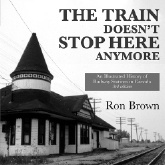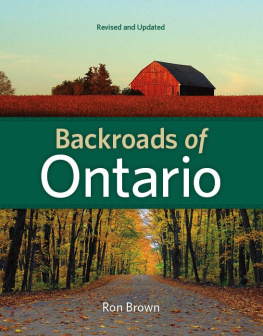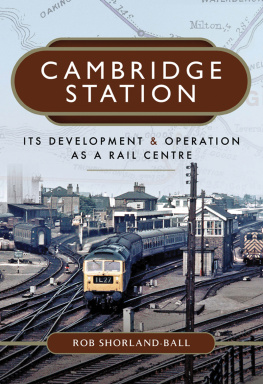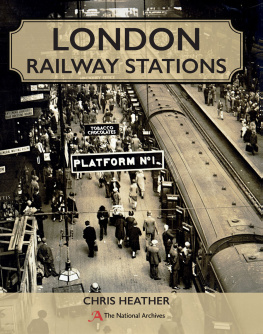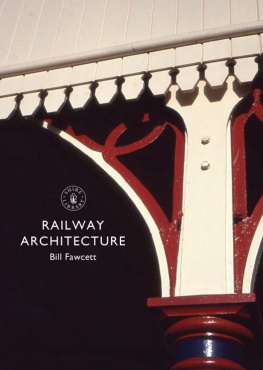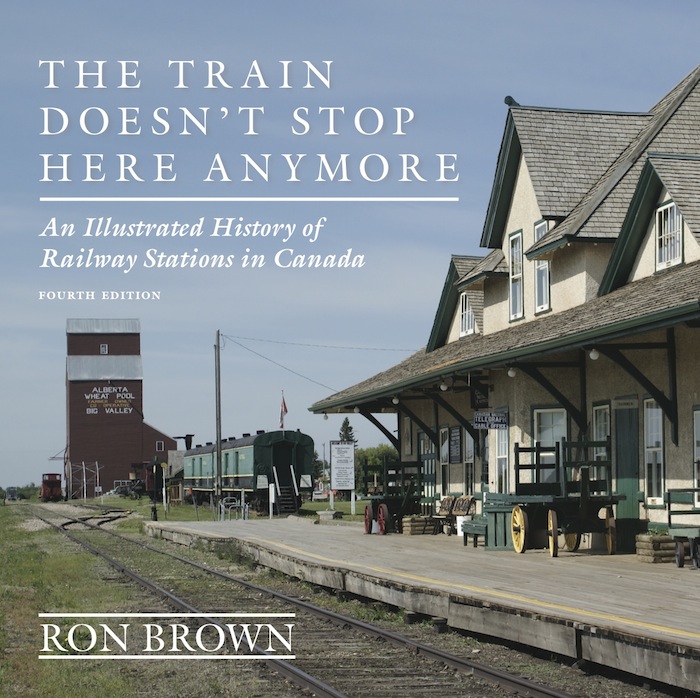Copyright
Copyright 2014 Ron Brown
All rights reserved. No part of this publication may be reproduced, stored in a retrieval system, or transmitted in any form or by any means, electronic, mechanical, photocopying, recording, or otherwise (except for brief passages for purposes of review) without the prior permission of Dundurn Press. Permission to photocopy should be requested from Access Copyright.
Editor: Laura Harris
Design: Courtney Horner
Epub Design: Carmen Giraudy
Cover design by Jesse Hooper
Cover image: Big Valley Train Station. Photo by author.
Library and Archives Canada Cataloguing in Publication
Brown, Ron, 1945-, author
The train doesnt stop here anymore : an illustrated history of
railway stations in Canada / Ron Brown. -- 4th edition.
Includes bibliographical references and index.
Issued in print and electronic formats.
ISBN 978-1-4597-2781-6
1. Railroad stations--Canada--History. 2. Railroad stations-
Canada--Pictorial works. I. Title. II. Title: Train does not stop
here anymore.
TF302.C3B76 2014 385.3140971 C2014-902958-6
C2014-902959-4
We acknowledge the support of the Canada Council for the Arts and the Ontario Arts Council for our publishing program. We also acknowledge the financial support of the Government of Canada through the Canada Book Fund and Livres Canada Books, and the Government of Ontario through the Ontario Book Publishing Tax Credit and the Ontario Media Development Corporation.
Care has been taken to trace the ownership of copyright material used in this book. The author and the publisher welcome any information enabling them to rectify any references or credits in subsequent editions.
J. Kirk Howard, President
The publisher is not responsible for websites or their content unless they are owned by the publisher.
Visit us at: Dundurn.com
@dundurnpress
Facebook.com/dundurnpress
Pinterest.com/dundurnpress
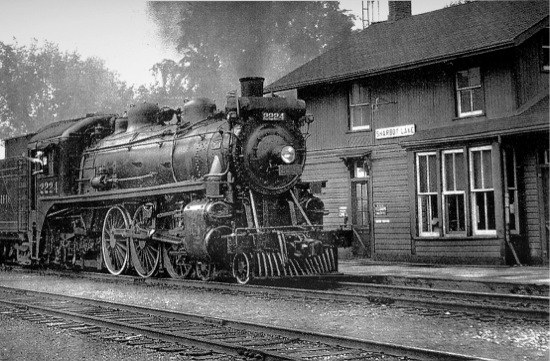
This photo taken in Sharbot Lake, Ontario, depicts the CPRs Van Horne Station, that lines first station style. Photo courtesy of the Dave Shaw Railway Memories Collection.
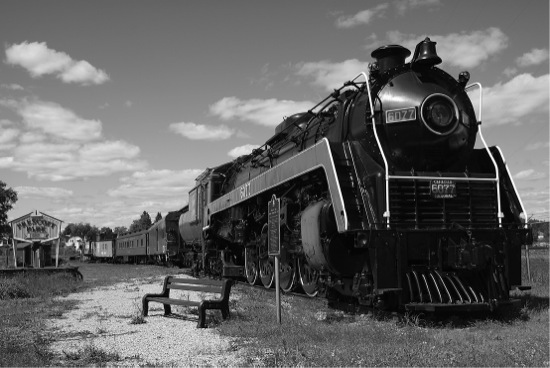
A steam engine known as Bullet Nosed Betty leads a display train at the northern Ontario Railroad Museum and Heritage Centre in Caperol, Ontario. Photo by author.
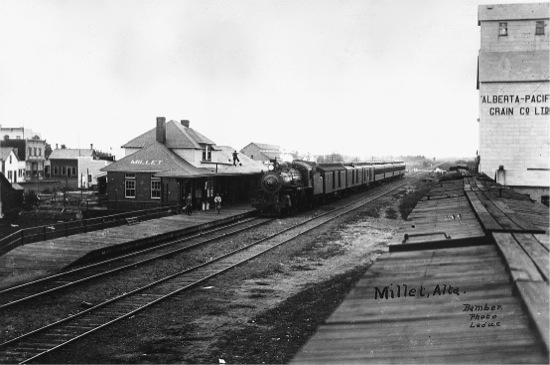
Millet, Alberta, displays a typical station landscape. Photo courtesy of Archives of Alberta, B-A 487.
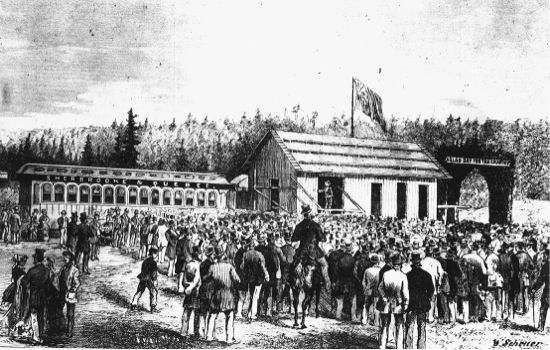
Uncompleted in this sketch, the first station on the Sherbrooke and Quebec Railway was as simple as they get. Illustration courtesy of CPR Archives, 5397.
Few first generation stations have survived. Built quickly and cheaply to get the railways up and running, nearly all had been replaced within twenty-five years. Booming towns and growing freight and passenger traffic demanded larger stations, new technology required new layouts, and the pressure of competition and community pride placed pressure on the railways to build stations that were more solid and more elaborate. In 1900 Canada was entering its station heyday.
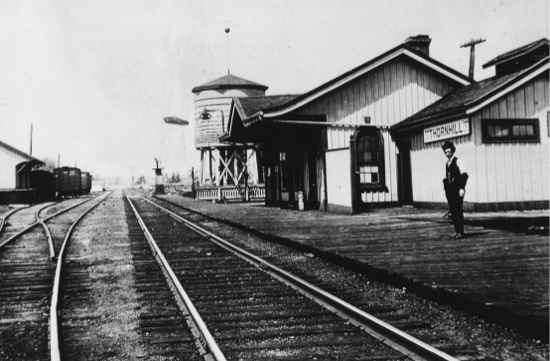
The Ontario and Hurons station at Thornhill typifies the lines early station style. Photo by author.
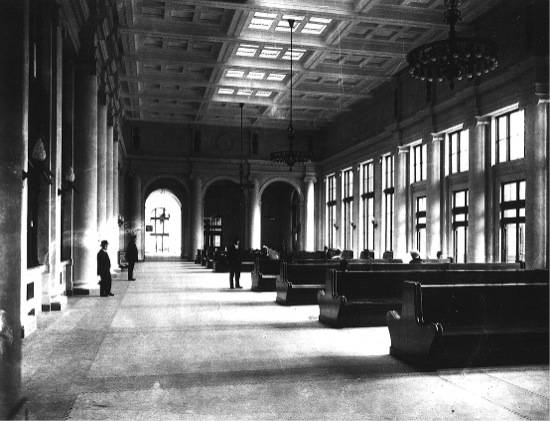
The waiting room of the CPRs new Vancouver station is one of its distinguishing features. Photo courtesy of CPR corporate archives,
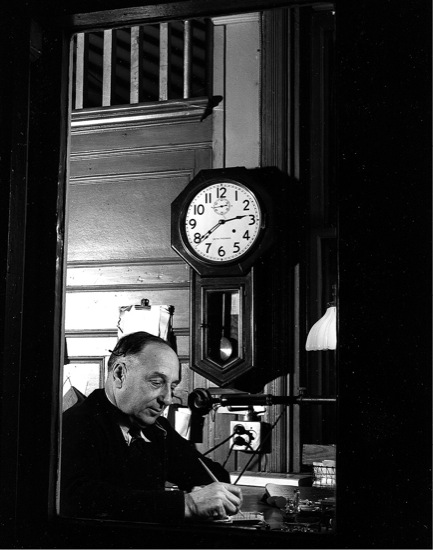
A night operator transcribes train orders. Photo courtesy of CPR Archives, M 5276.
6
The Masters of the Station: The Railway Station Agents
At Work in the Station
Station agents once numbered in the tens of thousands and were the most influential men (only a few were women) in small-town Canada, more prominent than bankers and politicians and the envy of the clergy. According to others, the agents were surly and self-serving, more concerned about rules, forms, and freight receipts than they were about the comfort and convenience of passengers. But revered or reviled, the railway station agent, like the stations he manned, has vanished from the roll call of Canadian communities.
Before construction began on the Great Western Railway in 1851, Canadas railways consisted of only a handful of portage railways: the Erie and Ontario, the Montreal and Lachine, and the Champlain and St. Lawrence. Because these lines served only to transport passengers and a bit of freight from one waterway to another, agents roles were quite simple. As with the stagecoach and canal operations that preceded them, their first jobs were to ticket passengers and collect express charges, and drum up business for the railway. But, unlike stagecoaches and steamers, trains operated along a single track and a new function was added; making sure that trains didnt collide.
Before the telegraph and before standard time, that wasnt easy. No two communities had the same hour on their clocks at the same time, and trains operated as best they could, according to a simple timetable. All trains were required to stop while the engineers entered the station to sign the train order forms. If the train ahead had been late, the agent held up the train at hand until he assumed the previous train was clear. With no telegraph or other form of inter-station communication, he simply held his breath and hoped he was right.
However, by 1855, the Grand Trunk and Great Western Railways had become Canadas first trunk lines, and the telegraph was making train operations simpler and safer. Relaying train orders soon became the agents most important function. As orders would click in from the dispatcher in the divisional station, the agent had to carefully write them down. Because this task took up such a large portion of the agents time, sending and receiving telegraph messages became almost second nature. It was not uncommon for an agent to send a telegram with one hand while at the same time writing a letter, carrying on a conversation, or even reading a book.


